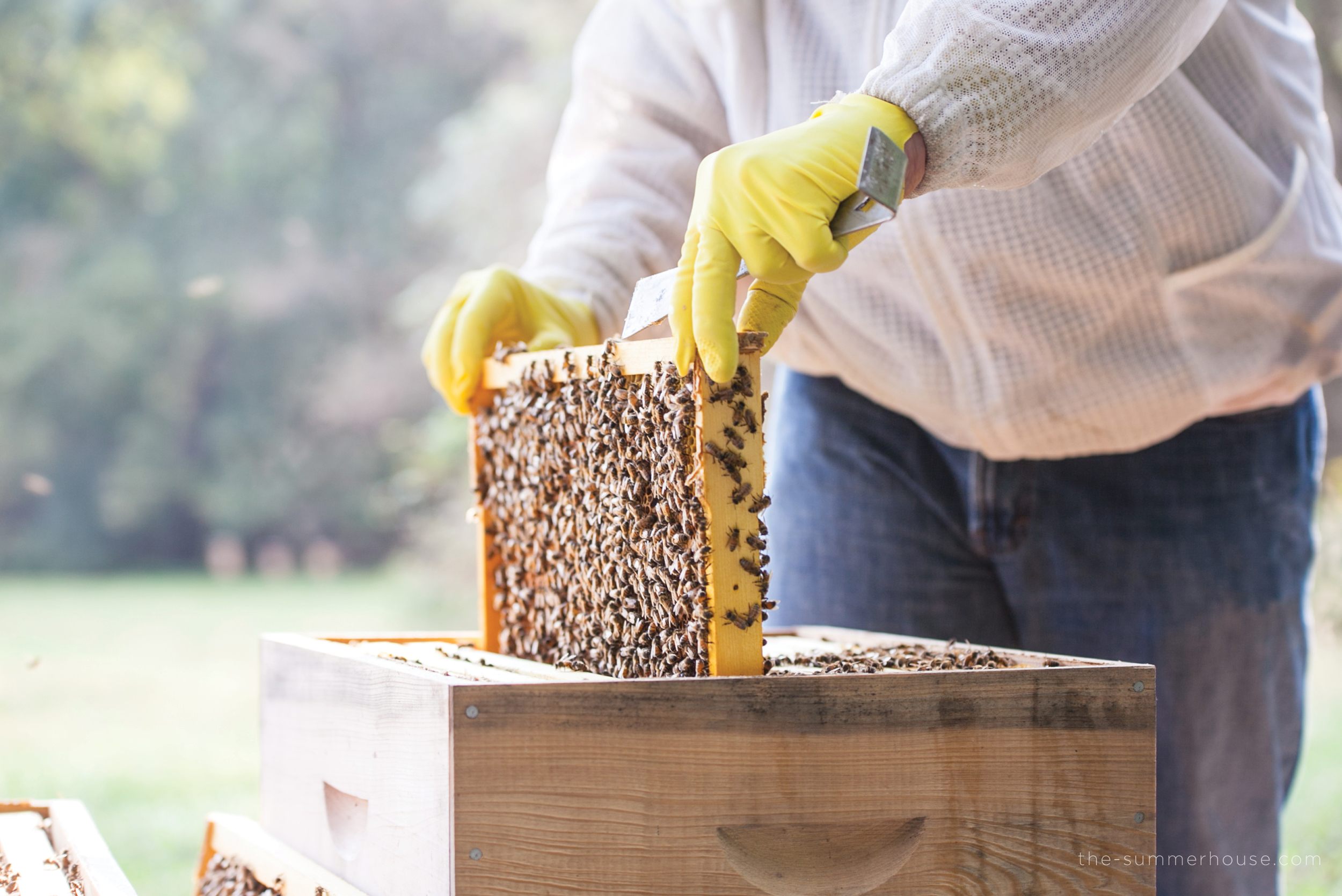Oh, matte black. How do I love thee?
When we set out to create packaging for our inaugural honey season, we wanted as much of the amber product to show through as possible. We sought high class, but wanted to still resonate as a pure, local product. We hopes to accurately represent each individual farm location, as the honey will taste slightly different based on what is growing in each area. {For example, Rocky Creek is home to a rare Sourwood tree that makes an exquisite honey.} And, we wanted it to stand out, but stay simple.
So, we started with a hex jar, to align with the tile flooring we have in our honey processing house, and of course, honeycomb. We drew from the clover element within the logo for River Taw Farms (or first location for hives) to create the bee graphic, and kept the typeface clean, sans serif and delicate. And we utilized the space on the top of the jar lid to allow as little label to cover the honey itself.
Combined with some quippy copy, a matte-metallic stock and a pop of color throughout, we felt confident releasing this "black label honey" to local vineyards, small general stores, boutique restaurants and gift stores in the greater Charlotte-Statesville-Cherryville area. There may be a few jars hanging around in our homes and offices too, ready to give to those who show up on our doorsteps.
As with any design project, it's "never done" -- and there are already a few edits I would make to our next run. But, product design is one of those challenges that requires both an analytical and a creative approach. In the case of the honey jar labels, one has to make sure that (a) all "required" state/local info is on the label, (b) that is it is correctly conveyed to the end user in such a way that it grabs their attention just by sitting on a shelf, (c) that it stands out amongst *many* competitors in this market and most importantly, (d) that the label actually FITS the jar correctly, especially when it is a unique or custom size. We worked with Frontier Label in our "backyard" of Greenville, South Carolina on this project, and would recommend them to anyone. I am sure that our product design will evolve over time, just as anything does, but for now, simple is sweet enough.
Interested in purchasing a jar of honey, or bees to start your own hive? Contact me for more information.
















